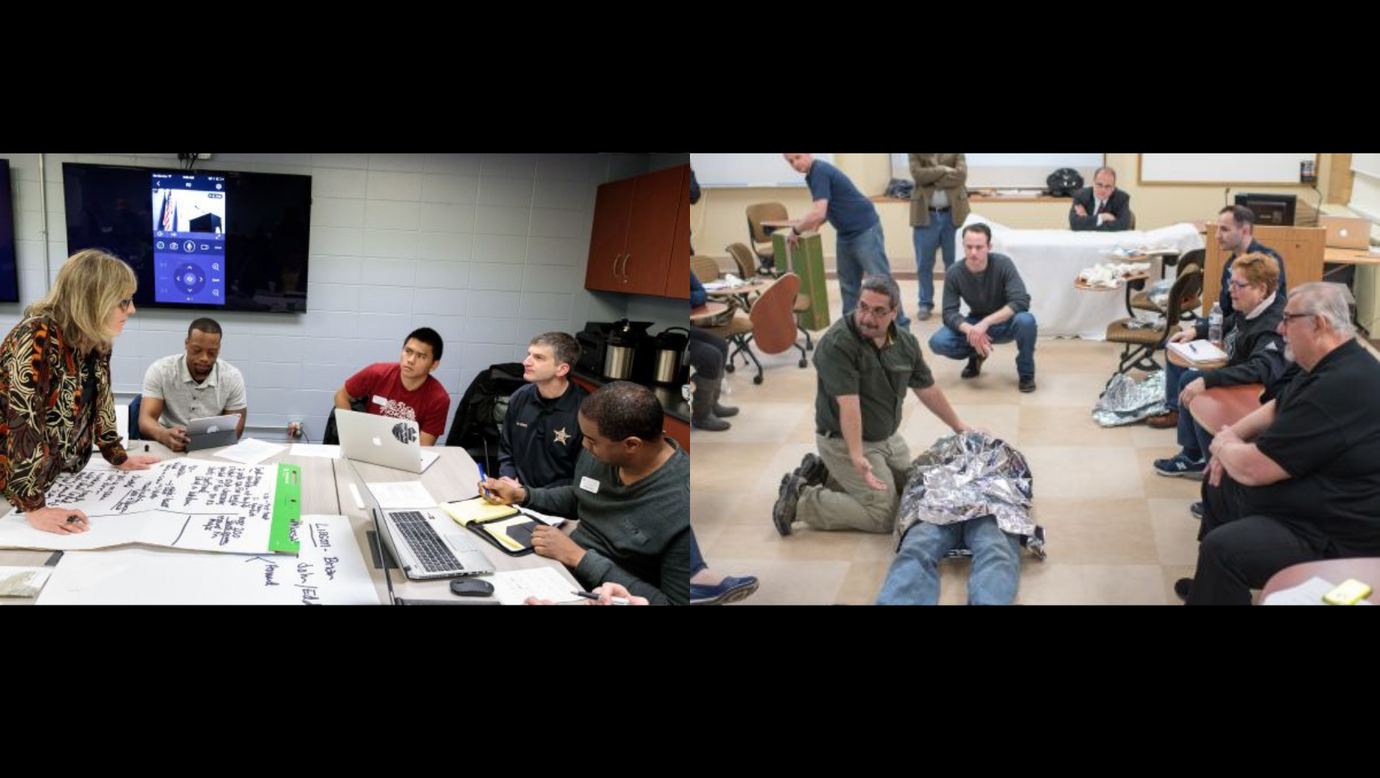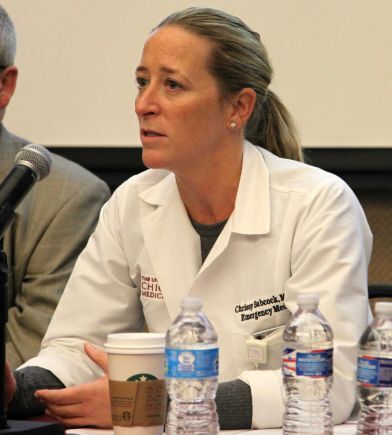The University of Chicago’s Master of Science in Threat and Response Management (MS-TRM) program has moved from the Graham School and UChicago Professional to the Section of Emergency Medicine in the Biological Sciences Division (BSD). The first student cohort under its new academic home will begin in fall 2026.
For Christine Babcock, MD, co-director and an alumna of the program, the move represents both growth and continuity.
“This transition connects our students directly with faculty and clinicians who live and teach emergency response every day. It strengthens the bridge between theory and real-world practice,” said Babcock, Associate Dean for Graduate Medical Education and an Associate Professor of Medicine.
The decision to relocate the program aligns it more closely with faculty expertise in emergency and disaster response, said Christine Clark, director of graduate programs in the Office of Master’s Education in the BSD.
"This degree is about preparing people to think critically and act decisively when it matters most."
“The move ensures faculty oversight and strengthens academic connections within the Biological Sciences Division,” Clark said. “Emergency Medicine was a natural home, given its focus on real-world preparedness and the opportunity to align with other graduate programs such as Biomedical Informatics.”
Expanding real-world preparedness
Faculty leaders say the shift will not alter what makes the MS-TRM program successful, but it will expand opportunities for applied learning and collaboration.
“We’re not changing what already works,” said Mike McCartin, MD, Assistant Professor of Medicine and co-director of the program. “The core curriculum and experienced instructors are staying the same. What we’re doing is adding—new electives, practical exercises, and access to faculty with deep expertise in emergency response.”
Three concentrations remain to allow students to focus their electives on specialized fields of study: Cyber Risk Management, National Security, and Climate & Environmental Security.

Students participate in table top planning exercises and trauma response scenarios as part of the Master's in Threat and Response Management curriculum.
McCartin, a former Air Force pararescueman, the current Assistant Director of UChicago’s Aeromedical Network (UCAN), noted that Emergency Medicine faculty bring unique, hands-on perspectives to the program.
“Our faculty includes medical directors for regional EMS systems, specialists in disaster medicine, and experts in hospital preparedness,” he said. “That means our students can connect directly with professionals who manage real emergencies every day.”
Future offerings may include tabletop exercises, simulation-based training, and collaborations with city agencies, giving students first-hand exposure to large-scale preparedness operations.
Training Leaders in Broad Range of Industries
Since its inception in 2007, the MS-TRM program has attracted a wide range of professionals, from first responders to policy makers. Students have included members of law enforcement, fire departments, emergency management agencies, healthcare institutions, financial services, and nonprofits.
“The diversity of backgrounds is one of our greatest strengths,” Clark said. “Students learn as much from each other as they do from instructors.”
Graduates have gone on to leadership positions at organizations such as the Department of Homeland Security, FEMA, and Argonne National Laboratory, while others have advanced within local or state emergency management agencies.
The program’s executive hybrid format—meeting in person one weekend per month over two years—allows professionals to continue working while pursuing their degree. This model, along with a strong alumni network, fosters a tight-knit learning community dedicated to public service.
Second-year capstone projects expose students to real-world emergency response scenarios. They have ranged from emergency operations planning for airports to improving response times for fire departments and analyzing school safety policies.

Christine Babcock, MD
“This degree is about preparing people to think critically and act decisively when it matters most,” said Babcock. “Students are not just studying crisis management—they’re applying it to real problems in real communities.”
With its move to Emergency Medicine, the program will expand opportunities for research in healthcare risk, infectious disease preparedness, and climate-related threats.
“My hope is that our graduates leave ready to lead,” McCartin said. “We want them to walk into a crisis and know how to organize, communicate, and respond.”
In the years ahead, the program team plans to use student perspectives to refine course content, develop new electives, and identify emerging areas for research and collaboration.
“The landscape of threat management changes quickly,” Babcock said. “By keeping a direct line to our students and alumni, we make sure the program stays relevant, practical, and forward-looking.”